The pandemic has transformed the working module, with many people shifting to work from home.
It has increased our comfort while working. We can work from the couch, bed, desk, etc., or anywhere we like can be the workstation.
But does the comfort of working from your couch come with a price?
It does have its pros and cons.
The couch is not an ergonomic workplace, but users can work from the couch ergonomically by elevating the screen, using lap desks, proper lighting, back support, seat cushions, etc. Users should also maintain posture and avoid slouching to prevent neck, back, and head pain.

It is very comfortable and convenient to work from the couch. However, you need to pay attention to ergonomics for your health.
This article will discuss the benefits and drawbacks of working from the couch and how to make your couch more ergonomic.
Table of Contents Show
Advantages of Working from the Couch
Woking from the couch provides you with maximum comfort along with other benefits.
1. Comfort While Working
It is very comfortable to work from the sofa, and you can even take breaks occasionally.
You can sit according to your preference, wear what you want, and even watch TV from your workspace.
Comfort in your space certainly drives your motivation to get things done.
2. Less Commute
You can reach everything you want by walking across the room or hallways while working from the couch. It’s like a dream come true.
It’s one of the advantages of working from home. You can grab a snack, lay around, or even take a quick nap.

3. Change of Work Environment
If you are someone who works all day copped up in your home office. You certainly need a change of space.
And working from the couch is one of the most comfortable ways to work.
You can get bored while stuck in a working loop, and your creativity also declines.
You can get a fresh perspective and be more productive when you change your workspace.
Read about; Should You Use Dining Table as Work Desk?
Disadvantages of Working from the Couch
Working from the couch is not an ergonomic choice. Its materials, shape, and features are not made for working or holding a Laptop/Computer.
Since the couch is not made for work purposes, it lacks ergonomics. So, working from the couch can cause some health effects.
1. Slouching Posture
Ergonomically, you should be seated with your hips higher than your knees, which is impossible in most couches.
It forces your body into a slouch, harming your spine, bones, and tissues, making your body stiff and sore.
Couches are very soft and comfortable but not good for your posture. It does not provide support to your spine leading to the slouched position.
Slouching can misalign your spine and apply pressure on the internal organs. This can cause indigestion and even impair lung functions.
Read about; How to Work from Home Ergonomically without Desk?
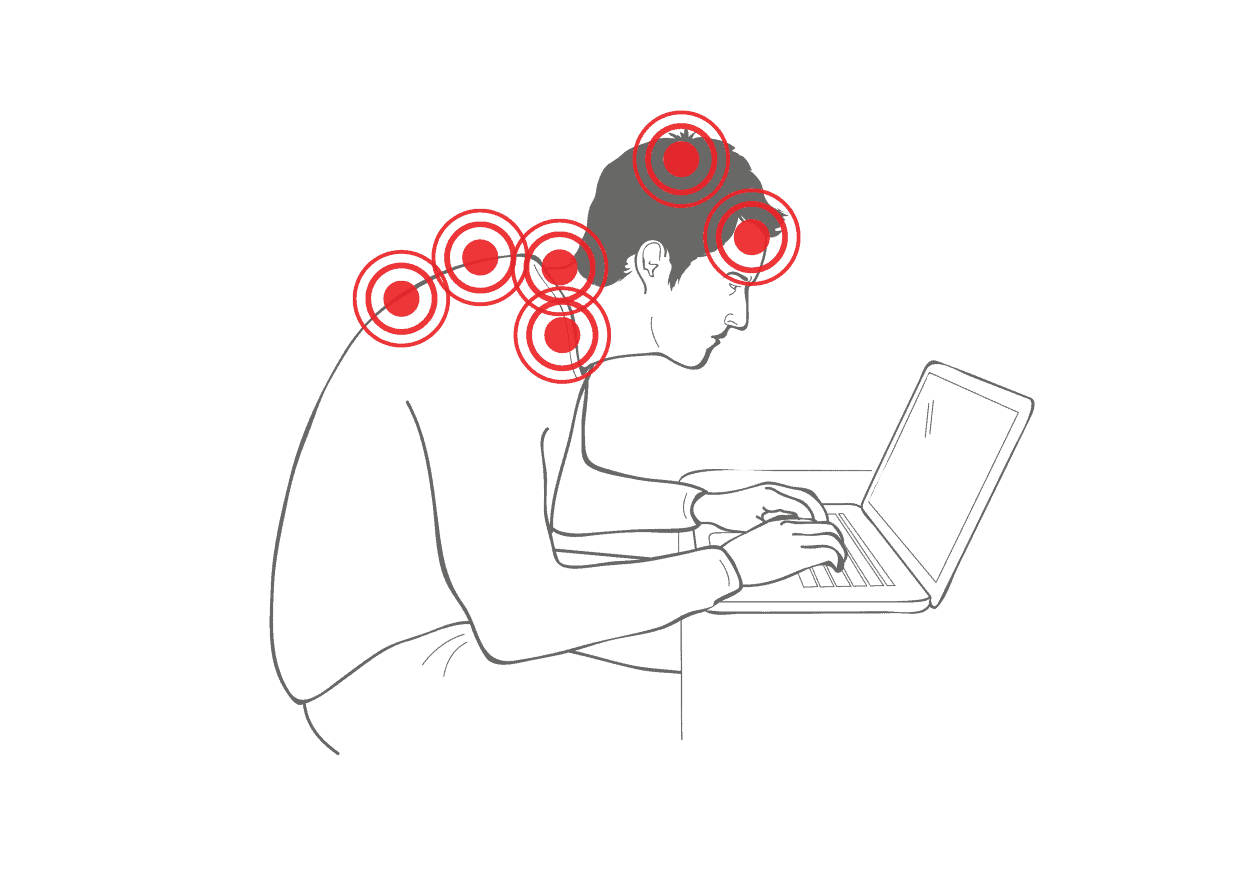
2. Possible Headaches
Sitting in a slouched position or tilting your head down for too long strains your neck and causes headaches.
According to the study conducted on slouching while using laptops or phones, it was reported that respondents had a medium head pain rating while slouching down.
3. Musculoskeletal Problems
According to studies, sitting with incorrect posture on the couch increases the risk of musculoskeletal injuries like carpal tunnel, tendonitis, muscle sprain, etc.
Couches do not have ergonomic features like office chairs, and the possibility of lying and sit in awkward positions can harm your body.
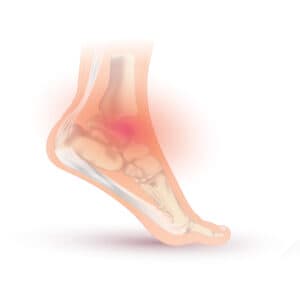
4. No Proper Lighting Condition
Couches do not usually have enough lighting during the nighttime. Unlike desks, there is no space to add a lamp, and the room lighting is not enough for reading or working for a long time.
Improper lighting can cause eye strain and even lead to migraines.
As per studies, working in low light tires out your eye muscles causing eye dryness and even vision problems.
5. Risk of Falls
Couches are designed for relaxation and are not usually intended to be a workspace.
So, there are problems like cords running over the floor or equipment like printers on the floor due to lack of proper space.
A study on computer-related injuries has stated that there is a seven times higher risk of falls due to tripping over cords and other risky environments.
10 Effective Tips to Ergonomically Work from the Couch
While the couch cannot be made as ergonomic as office chars. The tips below can save you from potential harm and help you work comfortably.
1. Elevate your Screen
If you work on the couch with your screen on the desk or table, you need to keep your screen elevated. Monitor risers are great for this purpose.
Alternatively, household materials like baskets or stack-up books can be used to keep your laptop or monitor elevated on the table.
By sitting in this position, you may also utilize your legs, notably your Femurs, to support your arms, allowing your wrists to rest comfortably in front of the computer.

To further optimize this position, tilt your laptop screen back a little so that you won’t have to slouch while working.
Even if you lay back on your couch while working, take the riser with you and lay it on your lap. Work with your chins tucked and not slouched in this position.
You can elevate your screen using laptop stands too.
2. Use a Lap Desk or Couch Desk
Keeping your laptop directly on your thighs while working from the couch can block the airflow into the laptop.
The blockage of airflow causes the laptop to overheat. Laptops can heat to the extent that it can cause ‘Laptop thighs,’ an actual condition of burn in your thigh due to laptops.
According to Dr. Shenaz Z Arsiwala, prolonged usage of laptops can cause damage and red pigmentation to the skin due to 44 degrees heat build-up by the laptop.
There have also been reported cases of hazards caused by laptop.
Four hours of daily usage of a laptop for three days caused skin pigmentation in a 24‑year‑old man.
Meanwhile, a second-degree burn was reported in a 29-year-old woman due to long hours of laptop use over her thighs.
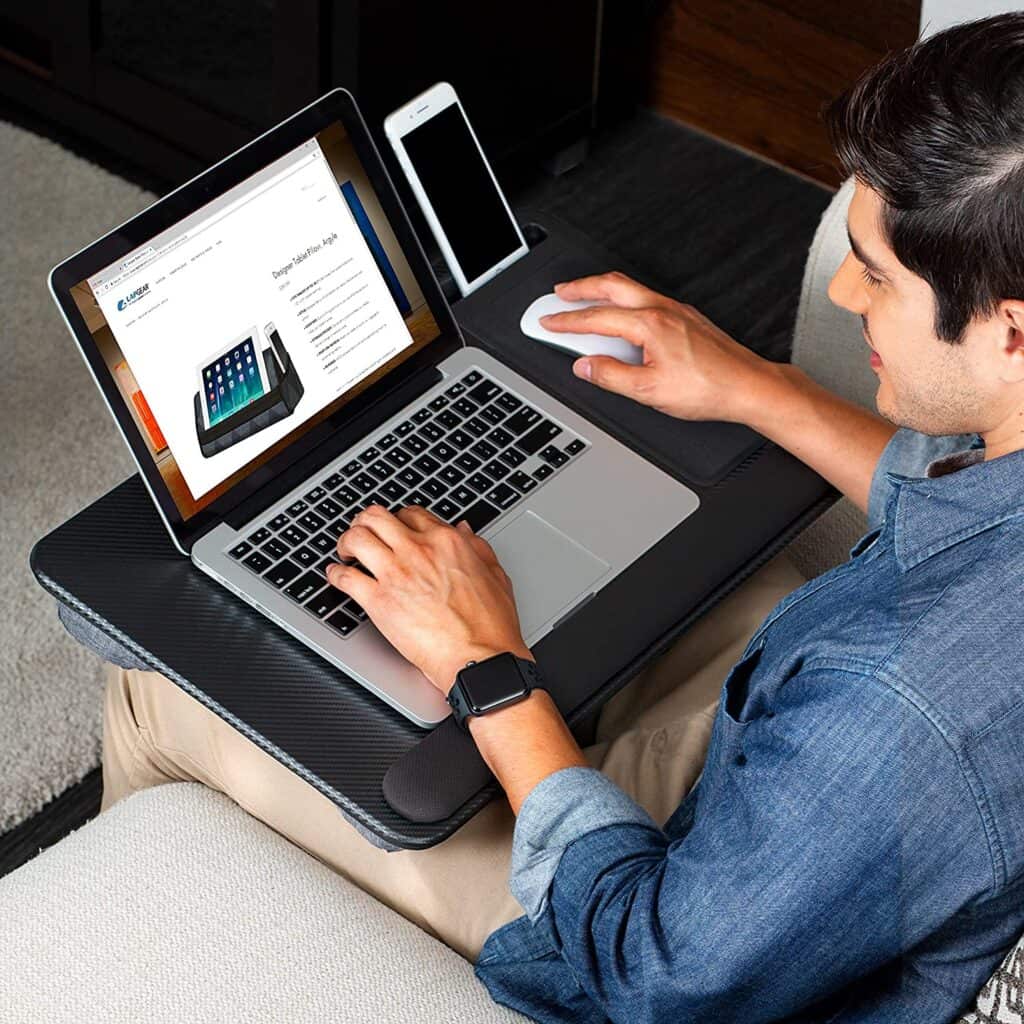
People use pillows and cushions as alternatives, but it does not provide stability to your laptop.
Using a lap desk provides a flat surface to keep your laptop stable. Some lap and couch desks also have separate spaces for keyboards and mouse.
Most lap desks have cushioned surfaces below to lay comfortably on your lap.
Here are some of the best lap desks and couch desks for better laptop placements.
| Lap Desk and couch desk | Features | Product Image |
|---|---|---|
| Huanuo Lap Desk | Includes space for mouse and Keyboard. Cushion boosters for comfort |  |
| Adjustable Laptop Bed Table | Three-armed foldable legs on either side | 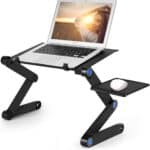 |
| Honey-Can-Do TBL-03540 Portable Laptop Lap Desk | Best cushioned lap desk Large surface area |  |
| LapGear Home Office Lap Desk | Built-in mouse pad Cell phone holder |  |
| Able Life Universal Swivel TV Tray Table | Height adjustable Bamboo surface | 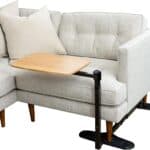 |
Also read: Can You Work While Lying Down?
3. Provide Back Support
According to research, the slouching position can cause back and neck pain and headaches.
Keep your back straight to the couch back support to avoid slouching.
You can use back pillows like the Removable wash Lumbar Support Pillow for back support and to maintain your posture.
According to the research, the back pillow improves posterior pelvic tissues by reducing thoracolumbar curvature.
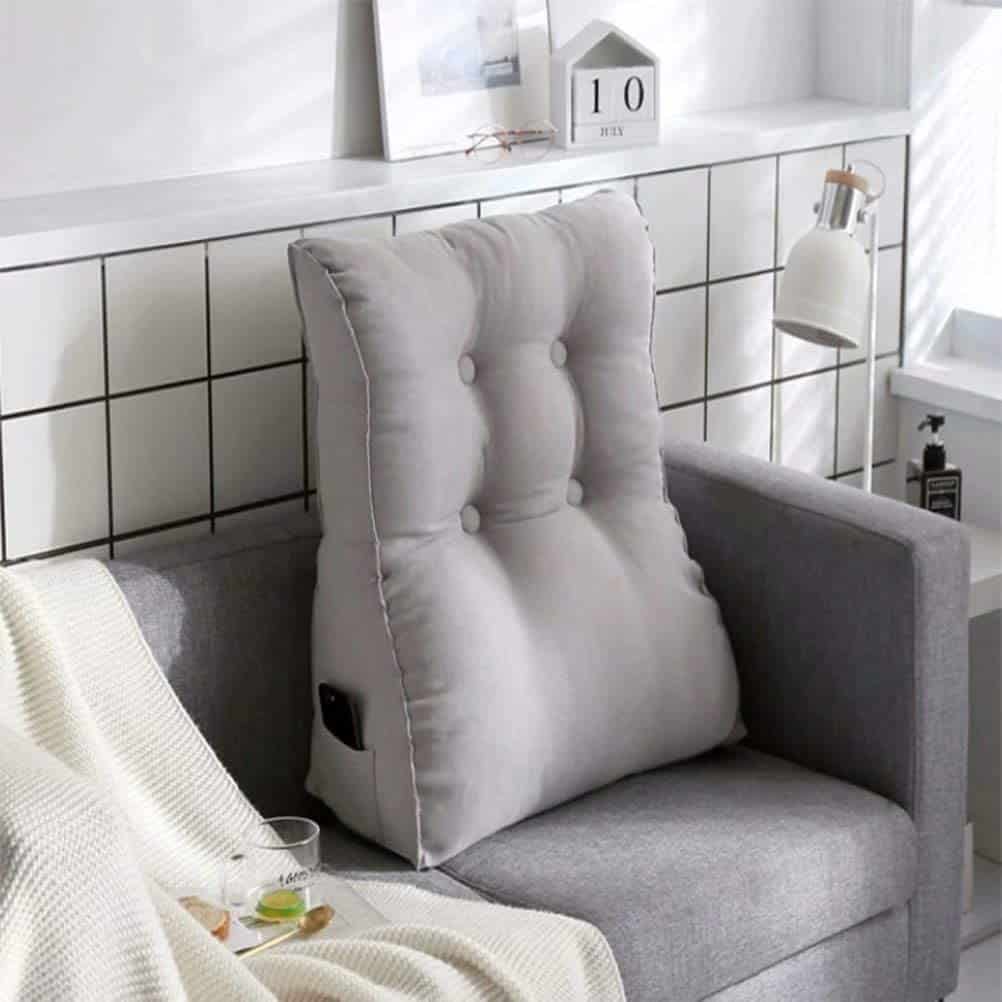
4. Maintain Adequate Lighting
Unlike working from a desk, you can not add a lamp or light to your couch. So, you might have difficulties while working or studying late at night.
Reading or working under low light can strain your eyes and neck as you slouch for a better view.
You can use an overhead lamp that will provide enough lighting from above and won’t get in your way.
Here are some of the best lighting for working from the couch.
| Lighting for working on Couch | Best Features | Product Image |
|---|---|---|
| Brightech Sparq - Hanging, LED Arc Floor Lamp | Arched surface 3 way dimming |  |
| Dimunt LED Floor Lamp, Bright 15W Floor Lamps | 10%-100% brightness and stepless color temperature settings ranging from 3000K-6000K weighted base and sturdy design |  |
| Globe Electric 67136 Delilah 72" Torchiere Adjustable Reading Light | Three-way dimmer Sleek design |  |
Read about; Best Lighting Tips for Computer Work.
5. Take Breaks to Stretch
You can end up with sore back and arms and even headaches after a long day of work, even if you are on a soft surface like a couch.
It’s all due to muscle stiffness and lack of circulation as you work all day with fewer body movements.
Taking breaks and stretching or even walking around for a bit can work wonders on your stiff body and joints.
There are specific exercises for neck pain, back pain, and even wrist pains.
However, stretching your body for a while can help with circulation.
If you are someone who gets too immersed in work and forget about it, use an alarm for every hour or so and stretch for a few minutes.
6. Use Seat Cushions
Seat cushions support your lower back and spine while sitting. Couches usually have a soft surface.
However, the extra soft surface can harm your spine and neck due to a disturbance in normal spinal curvature.
- Use orthopedic gel cushions with memory foam to support your tailbone while working long hours.
- There are seat cushions with reversible sides, one firm and the other soft so that you can turn and use them as per requirement.
- Foam cushions sink in to provide you with comfortable yet sturdy support.
- Use cut-out design cushions to support your tailbone and relieve the pressure from your thighs according to your body size.
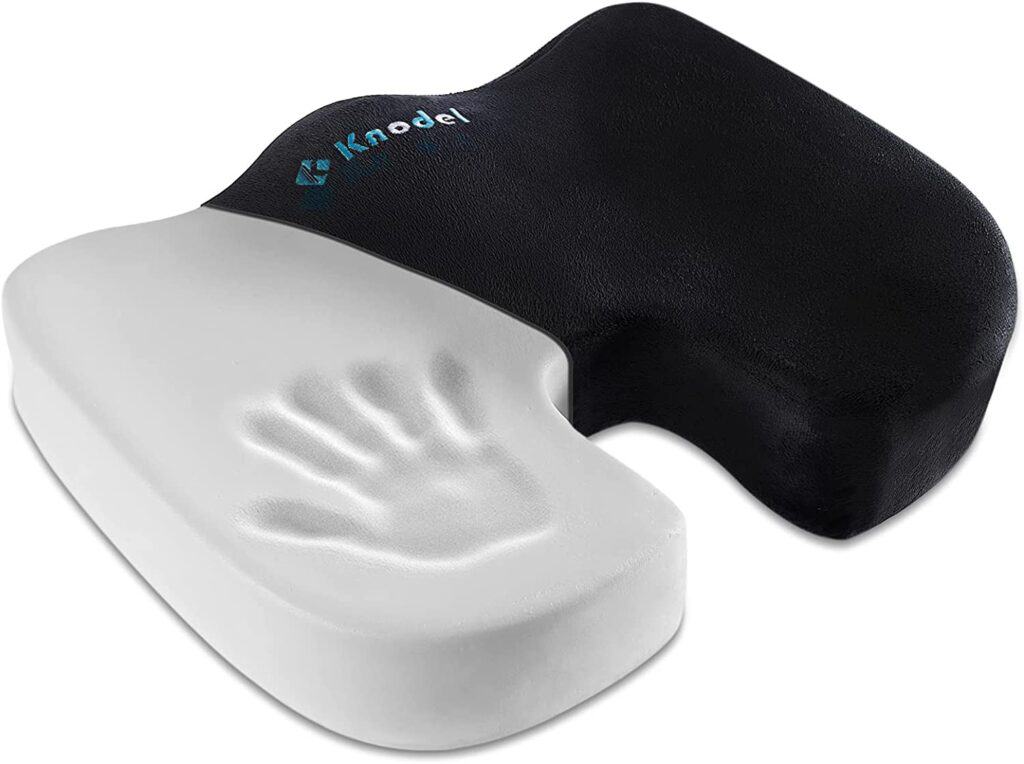
7. Make Space for Storage
While working from your couch, the first inconvenience you might notice is getting up or stretching to reach out for things.
Unlike working from a desk and chair set, you have no storage spaces and sturdy surfaces to hold your belongings like stationaries, cups, electronics, etc.
As per office ergonomics, you should not have to stretch your body or twist your arms to reach for things in an ergonomic posture.
So, you can use armrests, cupholders, or even phone holders to store your thighs within reach while you work.
Want to know more? Read our article; Should You Use Armrest While Typing?
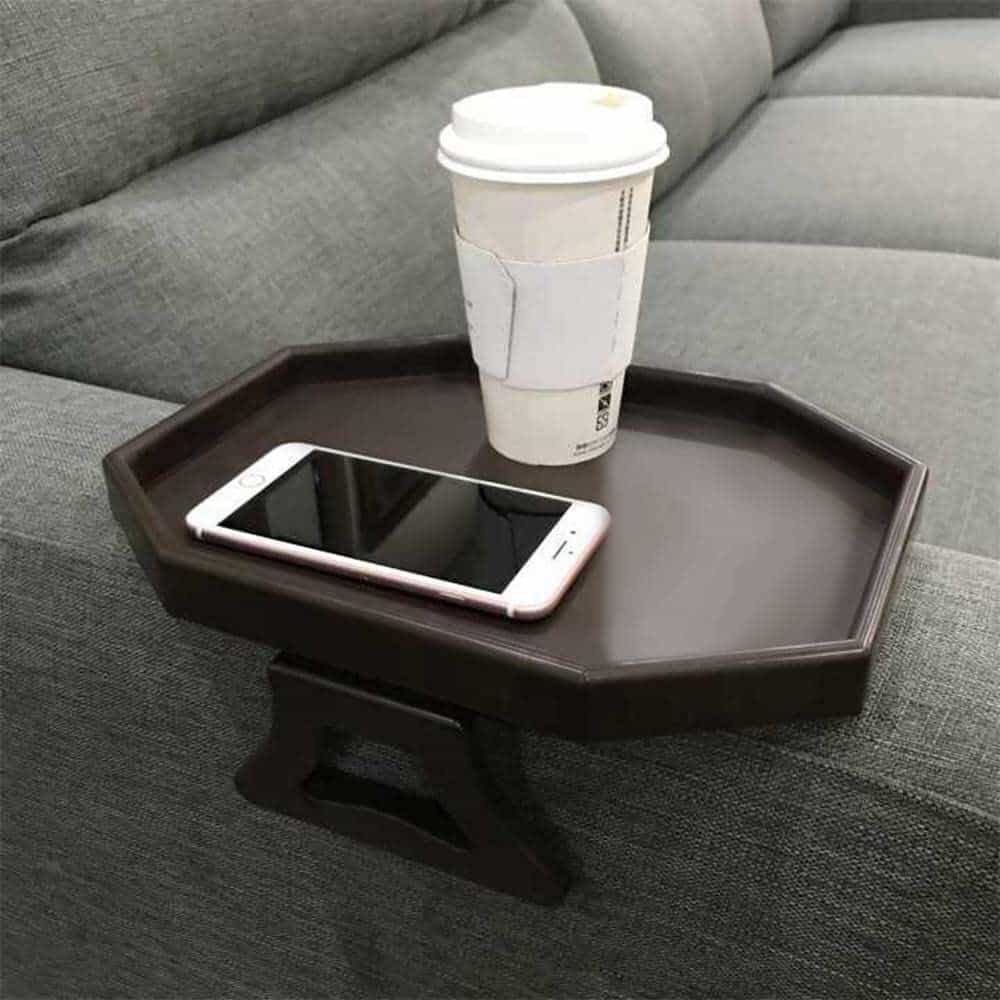
8. Manage your Cables
If you have your couch in the middle of the room or far from the power outlet, the cords to your laptop or desktop will be very messy.
You are likely to trip on the cords and fall, which can cause serious injuries. To minimize the risk, you can tape the cords to the floor.
You can also run the cords along the sofa’s surface and tape them.
9. Support your Feet
You need to keep your feet supported while working for proper blood circulation and prevent joint and muscle health.
Do not dangle your feet while working from the couch. You should place your feet parallel and flat to the ground while sitting on the couch.
Dangling your feet can cause muscle strain and pressure on your thighs.
However, if your couch doubles as a recliner, you can keep your feet elevated with just your heels sticking out of the footrest.
Use a footrest or a separate ottoman to support your feet if the couch is too high and you can’t reach the ground while sitting.
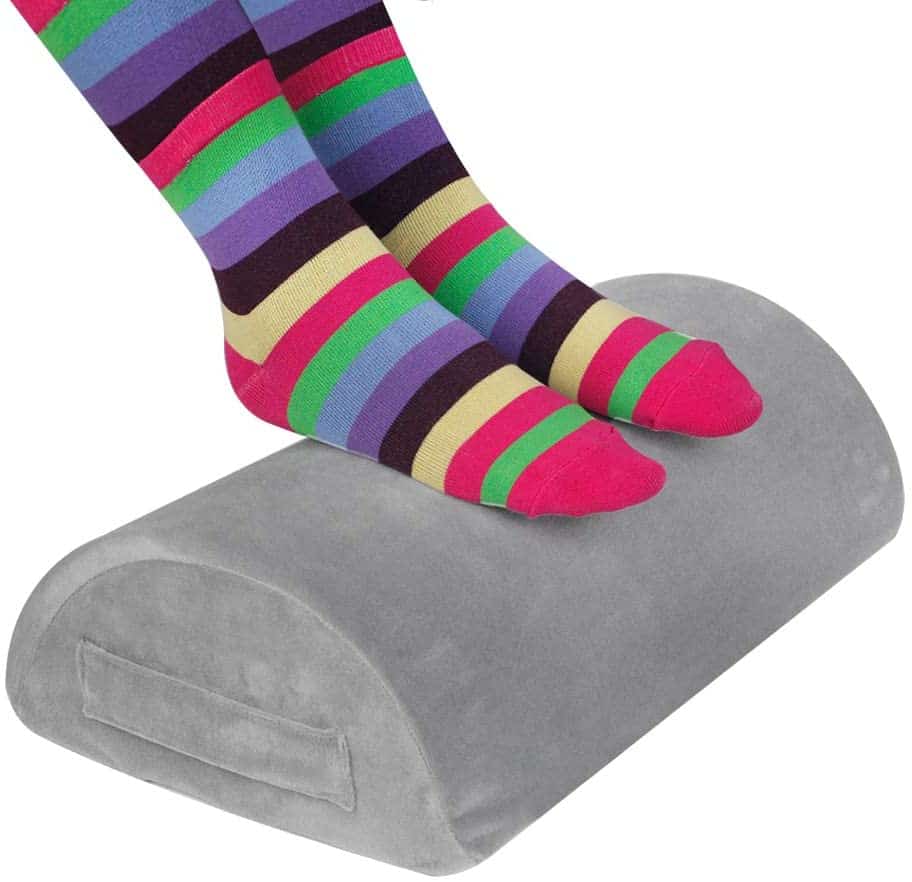
Do you hang your feet on recliner? If yes, then consider reding our article on; Should my feet hang over the Recliner?
10. Create a Comfortable Workspace
Working from the couch is comfortable, but it can also be distracting. Especially if your couch is present in the living room, with a TV, large windows, and entertainment to tempt you while working.
If you share the space with others, it might disturb you. Children, pets, and even friends or family may use the area and distract you.
Relax by putting on some soothing music or white noise. Ensure that you are not too hot or cold, and check your wifi connection for working smoothly.

The Bottom Line
Working from the couch is not the top ergonomic choice, but we certainly can make the best out of it.
Using equipment like footrests, floor lamps, lap desks, etc., you can make your workspace ergonomic and comfortable.
Moreover, if you take care of your posture and exercise, you will remain healthy even while working from the couch.
Read about; How to Work from Home Ergonomically without Desk?


